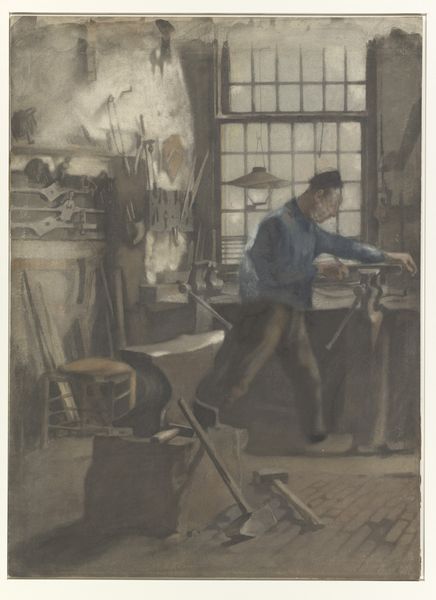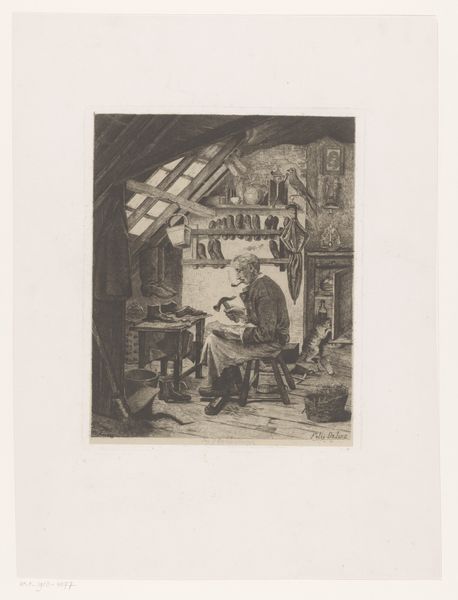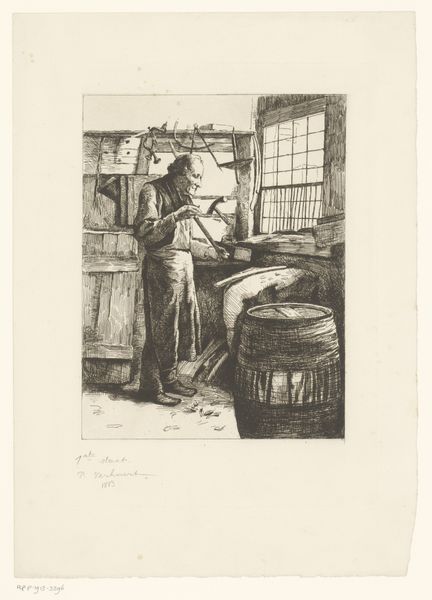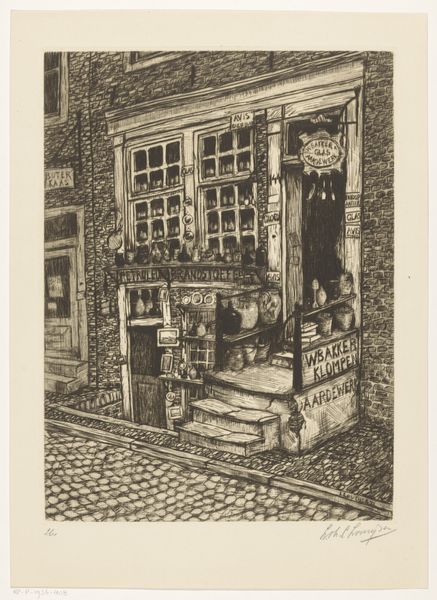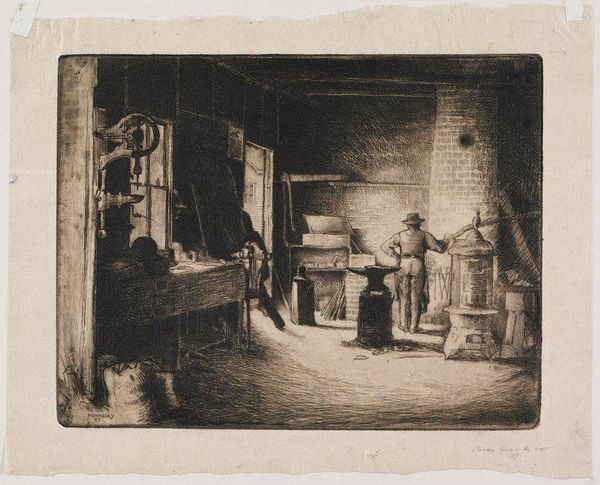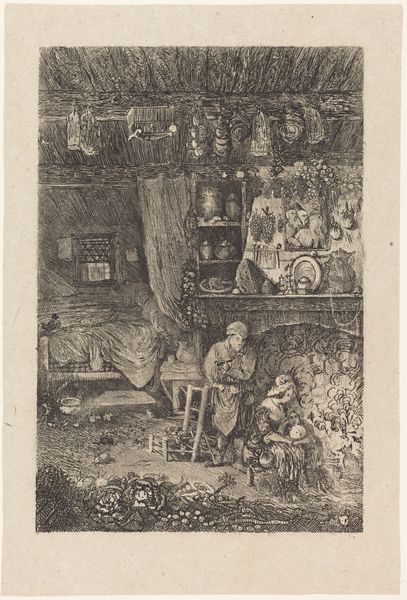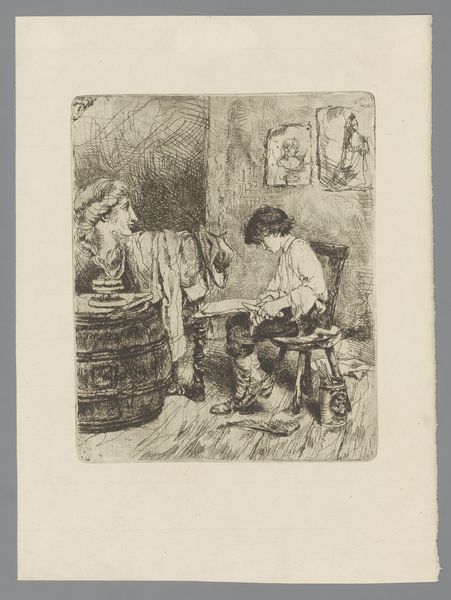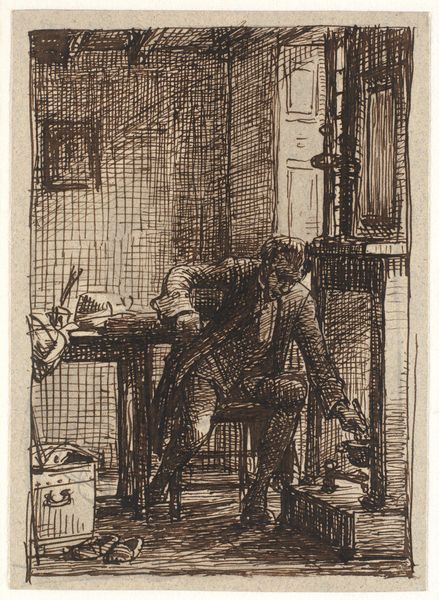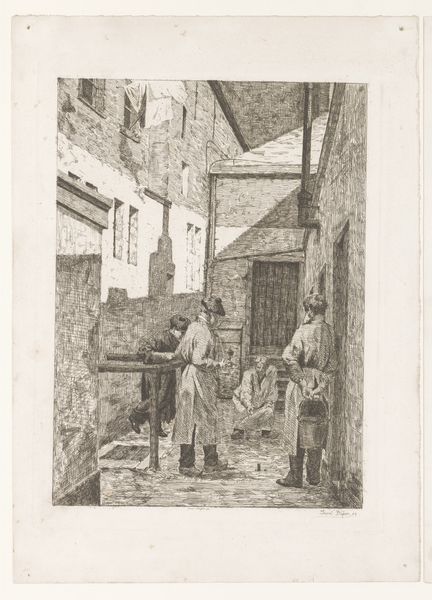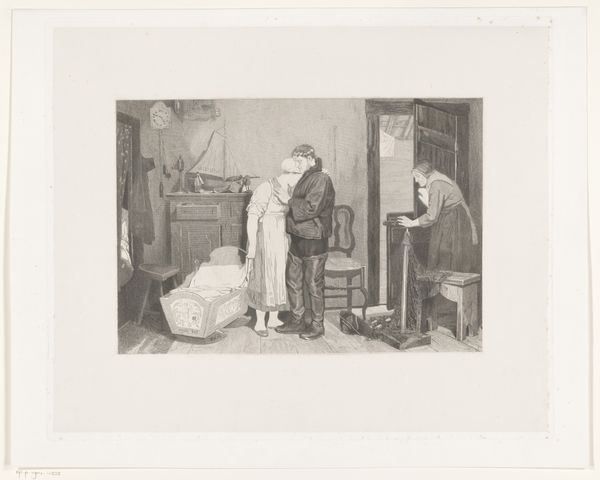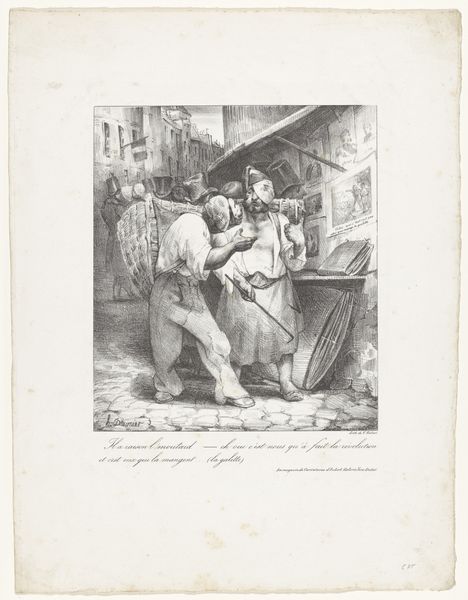
drawing, print, etching, intaglio
#
portrait
#
drawing
# print
#
etching
#
intaglio
#
genre-painting
#
modernism
#
realism
Dimensions: height 627 mm, width 500 mm
Copyright: Rijks Museum: Open Domain
Curator: This is Willem Witsen's "Smid aan het werk bij een bankschroef bij het raam," or "Smith working at a vice by the window," created around 1908. It's an etching, a beautiful example of intaglio printing. Editor: Immediately, I'm struck by the contrast of light and shadow. It almost feels cinematic, capturing the quiet intensity of the blacksmith’s labor in a realistic but dignified way. Curator: Absolutely. The print medium itself, with its linear precision, allows for that intense detail. The crosshatching and line work really showcase Witsen's mastery of the etching technique, right? The visible labor of the artist mirroring the physical labor of the blacksmith. Editor: It also draws our attention to the class and the experience of labor at the beginning of the twentieth century. Witsen, coming from a wealthy background, presents this image of working-class life. Is it social commentary or mere observation? How do we interpret his gaze? Curator: I see it as more observation, though never truly neutral. He clearly values craft. Notice the detailed depiction of tools hanging on the walls. They aren’t romanticized; they're shown as essential elements of his work, speaking to both the physicality and ingenuity required for metalworking. The materials—the steel, the wood, the coal—are almost characters themselves. Editor: I agree. The social context is key. The turn of the century was marked by significant class divisions. How conscious was Witsen of perpetuating, or perhaps subverting, these hierarchies through this artwork? Was he raising awareness or simply showcasing an everyday scene? Who was his work really intended for? Curator: I suspect it’s both. There's definitely an appreciation for the honest labor, and for representing reality in a non-idealized form which speaks to modernism. Editor: This piece resonates with conversations about value, and who determines the worth of skilled versus unskilled labor, what makes "fine" art versus a simple trade... questions that are still poignant today. I'm thinking, what aspects of labor go unacknowledged? Curator: Exactly. Even in an age obsessed with new technology, Witsen is making a claim for respecting a very ancient way of working. It's in the texture of the lines, in the depth of the blacks and grays, we see that connection with raw materials. Editor: Considering these points about labor and class, along with Witsen’s visual language of social realism, enrich this viewing experience beyond just formal appreciation of line, light, and shadow. Curator: Absolutely, looking at this print, we gain an understanding of art history that isn't only art; it's really the material of history itself.
Comments
No comments
Be the first to comment and join the conversation on the ultimate creative platform.

